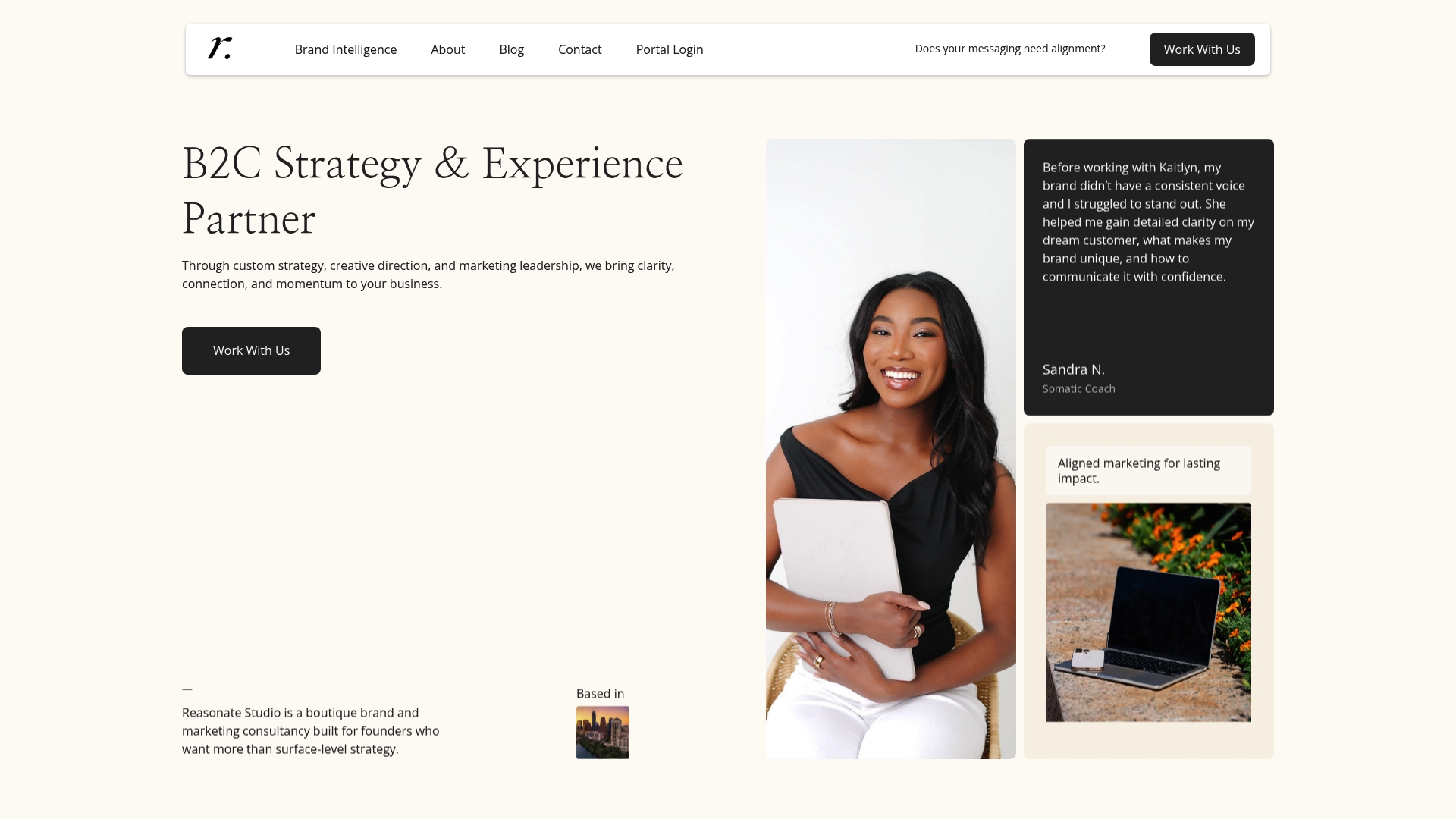Branding Strategies: Building Impactful Small Businesses

Learn how to develop a content strategy step by step, from defining clear goals to executing and refining your approach for sustainable business growth.

Did you know that brands with strong strategic foundations are up to 60 percent more likely to see measurable growth? Getting crystal clear about your brand and audience sets the stage for lasting business success. By understanding what drives your customers and mapping content to every step of their journey, you build deeper connections and stand out in a crowded market.
This step transforms your vague business idea into a crystal clear strategic roadmap. You will uncover the core elements that make your brand unique and define precise goals that drive meaningful growth.
Start by conducting a comprehensive brand audit that reveals your current positioning. Ask yourself critical questions: What core values define your business? Who are your ideal customers? What unique problem do you solve that no one else can? The SOSTAC marketing model suggests breaking this down into clear components analyzing your current situation, defining measurable objectives, and creating a strategic framework.
To clarify your brand foundations, map out three key elements. First, define your brand archetype which represents your business personality. Are you the hero who solves problems? The sage who provides wisdom? The creator who brings innovative solutions? This archetype will guide your messaging and help you connect authentically with your audience.
Second, articulate your value proposition with laser precision. This isn’t about listing features but expressing the transformative outcome you deliver. Instead of saying “I provide marketing services” shift to “I help entrepreneurs turn their side hustle into a predictable revenue stream.” See the difference? Specificity creates connection.
Third, develop your messaging architecture. This involves creating clear statements that communicate who you serve, what makes you different, and the specific results you generate. Think of this as your brand’s narrative skeleton that gives structure to all future content and communication.
Pro Tip: Document these foundational elements. A written brand strategy becomes your north star preventing scattered marketing efforts.
By completing this step you will have transformed abstract business concepts into a strategic blueprint ready for content and marketing execution. Your next move? Translating these foundations into a targeted content strategy that speaks directly to your ideal customers.
[Learn more in our brand strategy guide for entrepreneurs looking to build a resonant business identity.]
In this pivotal step you will transform your understanding of potential customers from generic assumptions to precise strategic insights. Your goal is to craft a laser focused view of who exactly will connect with your brand and what content themes will resonate most powerfully.
Start by creating a detailed audience persona that goes beyond basic demographics. Using advanced AI powered frameworks like SOMONITOR you can analyze large volumes of data to understand deeper psychological and behavioral patterns of your ideal customers. Who are they really? What keeps them up at night? What transformational outcomes are they seeking?
Begin by mapping your audience across multiple dimensions. Consider their professional challenges professional aspirations personal motivations and emotional triggers. For a service based business this might mean understanding not just surface level job titles but the underlying career progression fears and dreams driving their decisions.
To identify your core content themes conduct a comprehensive needs assessment. Look for intersection points between your unique expertise and your audiences most pressing challenges. This requires deep empathy and strategic thinking. Instead of creating generic content aim to develop themes that speak directly to specific transformation your audience craves.
Create a content theme matrix that categorizes potential topics into strategic buckets. These might include professional development personal growth industry insights and tactical solutions. The key is finding themes that demonstrate your deep understanding of their world while positioning your brand as a trusted guide.
Pro Tip: Your content themes should feel like a conversation not a lecture. Aim to create material that feels like insider knowledge from a trusted mentor.
By completing this step you will have developed a nuanced understanding of your audience and the specific themes that will attract and engage them. Your next move? Developing a content strategy that turns these insights into a powerful marketing approach.

Explore our [audience research tutorial for deeper strategic insights.]
In this transformative step you will design a strategic content roadmap that guides potential customers seamlessly from initial awareness to confident purchasing decisions. Your mission is to create a purposeful content strategy that feels like a personalized conversation addressing each stage of their buying experience.
Customer journey mapping requires understanding the psychological landscape of your audience across four critical stages. During the initial consideration stage customers are discovering their challenges and exploring potential solutions. Here your content should be educational informative and problem focused. Think blog posts podcasts and introductory videos that validate their experience and hint at possible pathways forward.
In the active evaluation stage potential customers are comparing options and seeking deeper insights. Your content needs to shift toward demonstrating expertise and building trust. This means creating comparative guides case studies detailed tutorials and thought leadership content that positions you as the most credible solution. The goal is not just to inform but to help them feel confident in their potential decision.
As customers approach the closure stage your content must address final hesitations and reinforce value. Testimonials detailed service breakdowns pricing transparency and risk reduction content become crucial. You want materials that answer every potential question and eliminate last minute doubts. Consider creating content like ROI calculators implementation guides and success story compilations that make choosing you feel like the most logical next step.
Post purchase content maintains momentum and transforms customers into advocates. Focus on onboarding resources continued education materials and content that helps them maximize the value of their investment. This stage is about deepening relationship and creating long term loyalty.
Here’s a summary of each customer journey stage and the most effective content types:

| Customer Journey Stage | Content Focus | Best Content Types |
|---|---|---|
| Awareness | Educate & inform | Blog posts Podcasts Intro videos |
| Evaluation | Build trust & expertise | Case studies Guides Tutorials |
| Decision/Closure | Address hesitations | Testimonials Service breakdowns ROI calculators |
| Post-Purchase | Foster loyalty & advocacy | Onboarding Education materials Success stories |
Pro Tip: Each piece of content should have a clear purpose and move the customer closer to their desired outcome. Think conversation not sales pitch.
By completing this step you will have created a sophisticated content mapping strategy that feels personalized intuitive and genuinely helpful. Your next move? Building a content production plan that brings this strategic vision to life.
Explore our [customer journey mapping guide for deeper strategic insights.]
This step transforms your content strategy from a brilliant plan into a reliable machine that generates results month after month. You will design systematic workflows that turn creative vision into predictable performance without burning out your team.
Begin by creating a comprehensive editorial calendar that goes beyond basic scheduling. Your calendar should become a strategic blueprint documenting not just publication dates but the entire content lifecycle. Include critical details like topic themes target audience segments content formats research requirements and specific ownership responsibilities. This approach ensures everyone understands their role in bringing your content strategy to life.
Implement a structured content ideation process that connects directly with your brand foundations and audience insights. Develop a systematic approach for generating content ideas that might include weekly brainstorming sessions competitive research audience feedback analysis and trend monitoring. The goal is creating a repeatable system that consistently produces high quality relevant content ideas aligned with your strategic objectives.
Establish clear quality control mechanisms that maintain your brand voice and strategic integrity. This means developing content guidelines documenting your brand personality tone requirements and specific stylistic nuances. Create templates checklists and review processes that help every team member understand exactly what excellent content looks like for your brand.
Design collaboration workflows that streamline content production. Determine clear handoff points between research writing editing and distribution stages. Use project management tools that provide transparency and accountability. Consider implementing weekly sync meetings that allow your team to discuss progress troubleshoot challenges and maintain momentum.
Pro Tip: Treat your content system like a living organism. Regularly review analyze and adjust your workflows to improve efficiency and effectiveness.
By completing this step you will have transformed your content strategy from an abstract concept into an operational system capable of delivering consistent results. Your next move? Implementing your first content production cycle and monitoring performance.
Learn more in our [content workflow guide for entrepreneurs seeking systematic growth.]
This final step transforms your content strategy from a static plan into a dynamic growth engine. You will learn how to systematically track performance understand what truly resonates with your audience and continuously evolve your approach for maximum impact.
Begin by establishing a comprehensive measurement framework that goes beyond surface level metrics. While page views and engagement rates provide initial insights the most powerful analysis comes from understanding deeper performance patterns. Look beyond vanity metrics and focus on indicators that directly connect to your strategic objectives like audience retention customer acquisition and meaningful engagement.
Define a core set of key performance indicators that align with your specific business goals. These might include conversion rates audience growth content share rates time on page and qualitative feedback. Brands like Moz and HubSpot demonstrate how strategic measurement can unlock exponential growth by providing granular insights into content performance. Your metrics should tell a story about how your content is moving potential customers through their journey.
Implement a regular review cycle where you deeply analyze performance data. This isnt about checking numbers but conducting a forensic investigation into what your audience truly wants. Examine which content pieces generated the most meaningful interactions. Look for patterns in topics formats and messaging that consistently drive results. Use tools like Google Analytics heat mapping software and audience feedback surveys to gather comprehensive insights.
Develop an agile refinement process that allows you to quickly adapt your strategy based on real world performance. This means creating a systematic approach to testing experimenting and iterating. Consider running controlled experiments like A/B testing different content formats messaging approaches or distribution channels. The goal is continuous incremental improvement not perfection.
Pro Tip: Treat your content strategy like a living organism. Be willing to experiment kill underperforming content and double down on what works.
By completing this step you will have transformed your content strategy into a responsive dynamic system that grows and evolves with your business. Your journey doesnt end here it becomes a continuous cycle of measurement insight and strategic refinement.
Explore our [content performance guide for advanced measurement techniques.]
It is easy to feel stuck when your marketing is filled with guesswork and scattered tactics. This article unpacked how lack of clarity, weak brand foundations, and an unfocused content strategy can keep your business from real growth. If you are tired of seeing your hard work go unnoticed or your revenue plateau, now is the time for a smarter approach. The step-by-step process you just read about is at the heart of what we do at Reasonate Studio, and it is built directly into The Aligned Impact Model™ for entrepreneurs and small businesses who crave both direction and momentum in their marketing.

Let us help you bridge the gap between strategy and growth. Learn how our proven systems blend clarity, operational discipline, and brand storytelling into a plan you can count on for measurable results. Visit our main site to see how Reasonate Studio can work with you whether you want DIY guidance or hands-on partnership. Still exploring? Use our brand strategy guide to dig deeper before you commit. The next confident step starts with you—give your business the strategic clarity it deserves right now.
To clarify your brand foundations, conduct a brand audit that identifies your core values, ideal customers, and your unique problem-solving abilities. Start by mapping out your brand archetype, value proposition, and messaging architecture—these elements form the backbone of your content strategy.
Your editorial calendar should detail not only publication dates but also topic themes, target audience segments, and specific ownership responsibilities. Create a comprehensive document that tracks the entire content lifecycle to ensure all team members understand their roles and deadlines.
To identify your core audience, create detailed audience personas that delve into their professional challenges, motivations, and emotional triggers. Use data analysis to segment your audience effectively and develop a laser-focused view of their needs and preferences.
For each stage of the customer journey—awareness, evaluation, decision, and post-purchase—create content that meets specific goals. For example, use blog posts and introductory videos in the awareness stage to educate, while case studies and testimonials work well in the decision stage to build trust and address hesitations.
Measure the success of your content strategy by establishing key performance indicators that align with your business goals, such as conversion rates and audience retention. Conduct a regular review cycle to analyze how your content performs and refine your strategy based on what resonates most with your audience.
Establish systematic workflows that include a structured content ideation process and clear quality control mechanisms. Regularly review your content systems and adjust as necessary to maximize efficiency and effectiveness in content production.